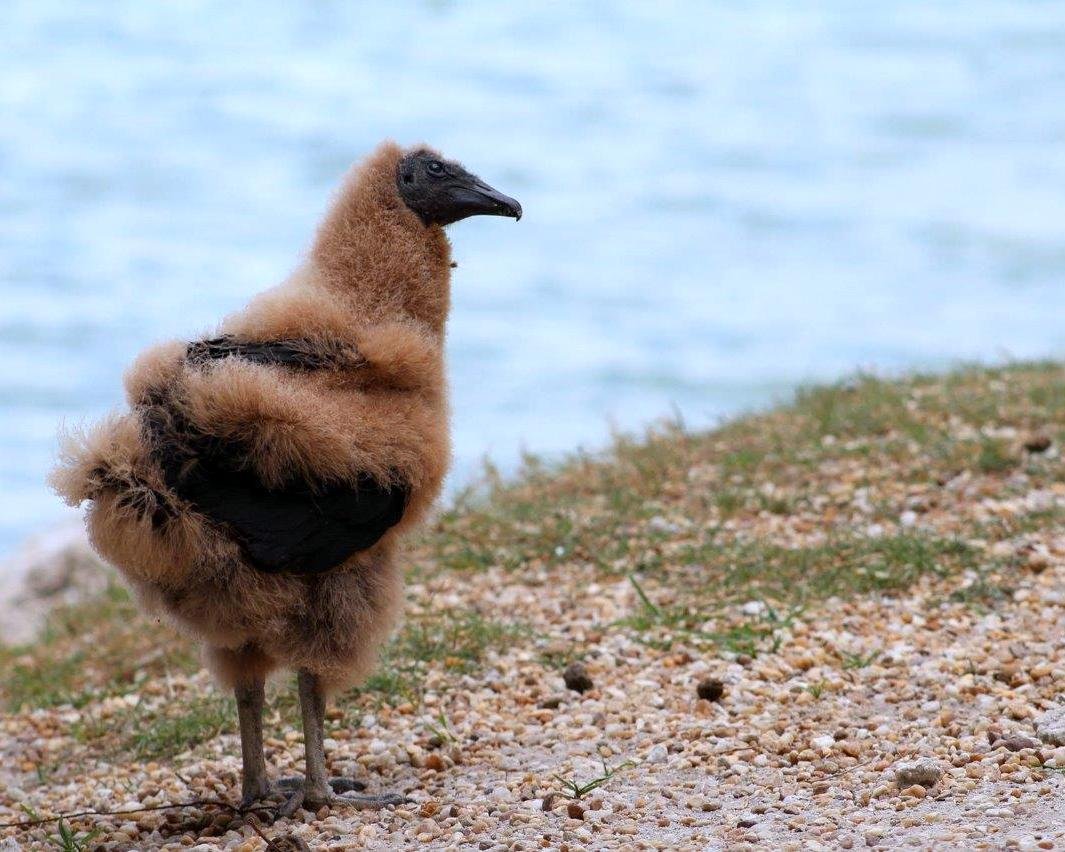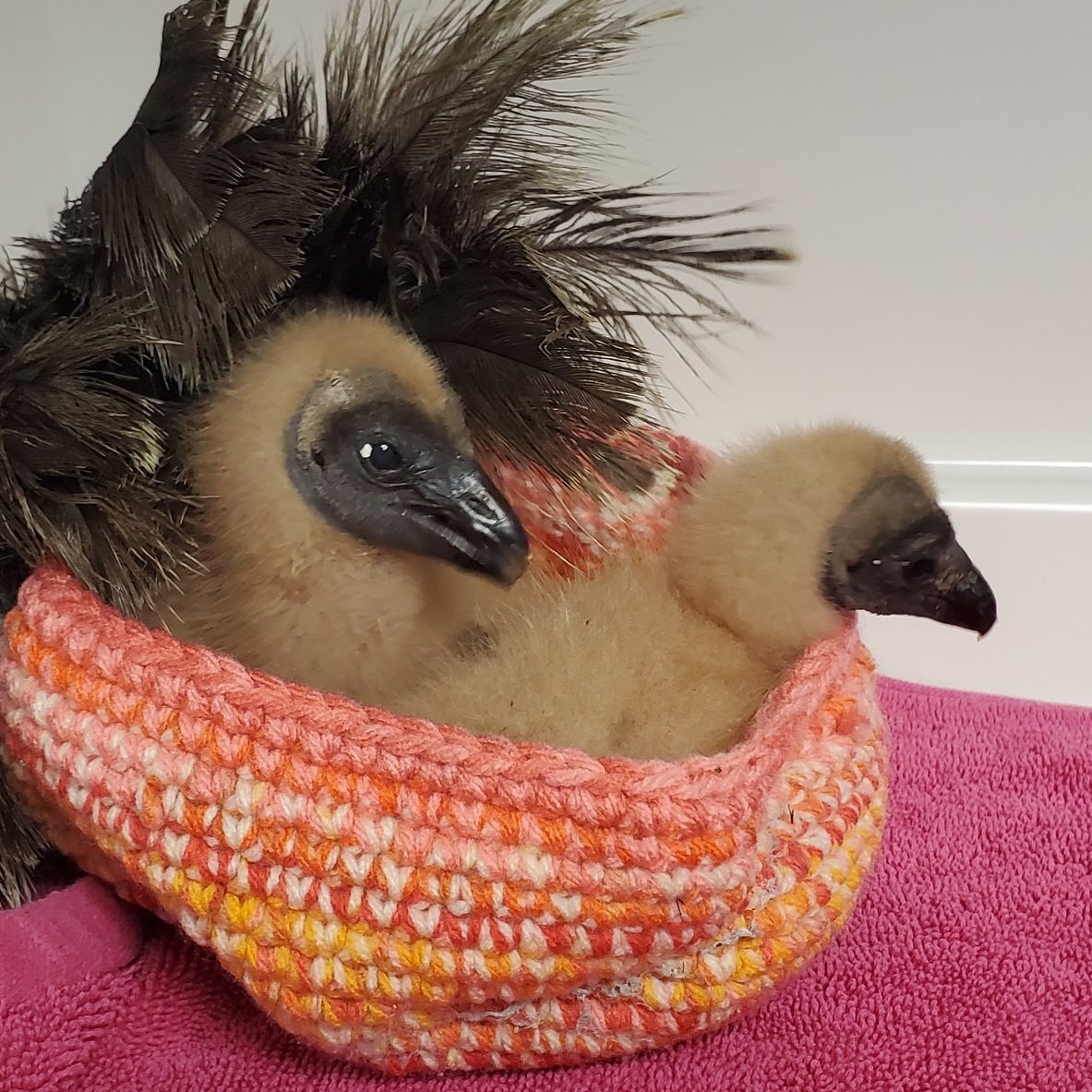Written by: Lucy Wiedmar, PHSS Intern
We’ve all seen it - the ominous collection of large birds gliding high in the sky, seemingly flying in circles around a concentrated area. Often thought to signal that death is near, you ask yourself what the unlucky soul had to endure. The soaring birds in the distance, flying in their ritualistic circles, cruising the wind currents, are most likely members of the new world vulture family.
Florida is home to two native species of vultures, the Black Vulture (Coragyps atratus) and the Turkey Vulture (Cathartes Aura). Both vulture species are in the taxonomic order Accipitriformes (which includes most diurnal birds of prey), and the family Carthartidae (consisting of five new world vulture species.) These two species can be differentiated by the distinct difference in head coloration, with black vultures having a solid black coloration on the head and bill, whilst the turkey vulture differs in a red/pink coloration of the head and a white-toned bill. While in the air, these two vultures can be identified by the difference in flight patterns observed among the two. The black vulture has a much more compact body with a shorter tail, a whitish patch on the outer primaries, and displays a powerful and sturdy 3-5 wing flap pattern. The turkey vulture on the other hand has a greater white-silver coloration along the lower border of their wingspan and tends to teeter while in flight, displaying significantly fewer wing flaps.
Adult Black Vulture feeding her fledgling.
Adult Turkey Vulture rescued by PHSS volunteers.
Although turkey vultures currently outnumber their black vulture relatives in the United States, black vultures have a greatly expansive native range, outnumbering turkey vultures in the western hemisphere. Year round, black vultures can be located across virtually all of the South American continent up to the southern and eastern United States. Over the past few decades, black vultures have crept their way even further northward - as far north as New England. Turkey vultures have a similar native range, found essentially across all of the South American continent, as well as encompassing almost the entirety of the United States.
While these two species of vultures differ in many aspects, they are very similar in one main regard: their choice of prey - which happens to be most prominently the carcasses of the once living. Due to vultures' feeding behavior relying mainly on carrion, they tend to be associated with negative connotations in the media and are often portrayed in a more “sinister” light, often being depicted as unhygienic or a precursor to death. Even Charles Darwin, the father of evolution, once called the birds “disgusting creatures”. Vultures get a bad rep in the Animal Kingdom, and due to the unwarranted stereotypes placed upon them, there are a lot of misconceptions floating around these birds.
However, I am here to defend the honor of our native vultures! Contrary to the stigmatization of vultures bringing along the notion of death with their presence, they actually play a crucial role in the health and stabilization of their ecosystems. Vultures play an incredibly important role by devouring decaying carcasses. By consuming flesh from the recently deceased, vultures are able to reduce and/or eliminate the spread of certain diseases, pathogens, and harmful bacteria that depend on rotting flesh to grow, develop, and spread. Some of the illnesses prevented by vultures' ecological role are anthrax, rabies, and cholera. Additionally, vultures' diet on carrion further facilitates nutrient cycling by maintaining high fertility among soils for plants to flourish, keeping the overall primary producers of our ecosystems healthy and thriving.
Because vultures are known “ground nesters”, they prefer to lay their eggs and raise their young in locations such as dark crevices, caves, hollow trees/fallen logs, abandoned buildings, brush piles, etc. Due to these nesting locations being significantly different than the depicted nesting behavior we see in many other birds (ie. collection of sticks, twigs, and leaves in high, out-of-reach areas), people may stumble across a clutch of young vultures and mistakenly believe they have fallen from their parents' reach. In the past, many people have “rescued” and brought in healthy, young vultures to Pelican Harbor with good intentions, but in reality are displacing these chicks from where they are supposed to be.
Pictured above are two black vulture chicks that were brought into our clinic due to the mistaken removal from their nest
If you ever happen to run into a nest of juvenile vultures, never intervene unless absolutely necessary. Call Pelican Harbor or another wildlife rehabilitation center and see what steps to take next after finding the nest. Experts will be more than happy to assist in these situations, and will help to avoid any unnecessary disturbances!
With that being said, the next time you stumble across our large, bald, funky-looking friends chowing down on their favorite slice of roadkill, take your eyes of disgust and transform them into eyes of admiration! Instead of feeling repulsed, express gratitude to our native vultures for protecting us and our surrounding ecosystem from the harmful spread of disease. And remember, if you happen to stumble across a nest of our baby vulture friends, first call your local wildlife rehab center to help guide you through the best options based on the current situation.
References
Alden, P., Cech, R., Nelson, G. (1998). National Audubon Society Field Guide to Florida. Fieldstone Publishing, Inc.
Cornell Lab of Ornithology. 2019. All About Birds. Cornell Lab of Ornithology, Ithaca, New York. https://www.allaboutbirds.org Accessed on [03/10/2022].
Ogada, L. D., Keesing, F., Virani, Z. M. (2011). Dropping dead: Causes and Consequences of vulture population declines worldwide. Annals of the New York Academy of Sciences, 1-15. doi: 10.1111/j.1749-6632.2011.06293.x
Royt, E. (2016). Vultures are Revolting. Here’s Why We Need to Save Them. National Geographic.












